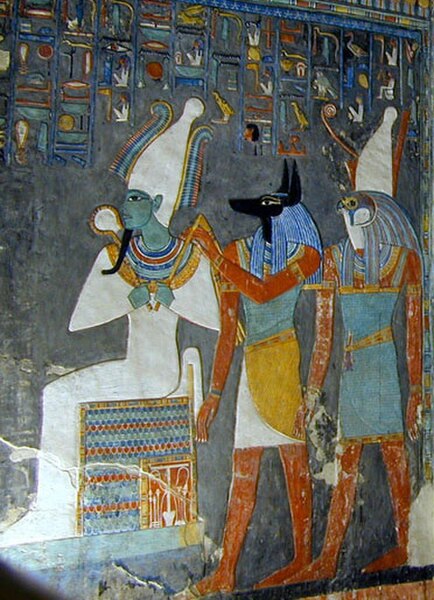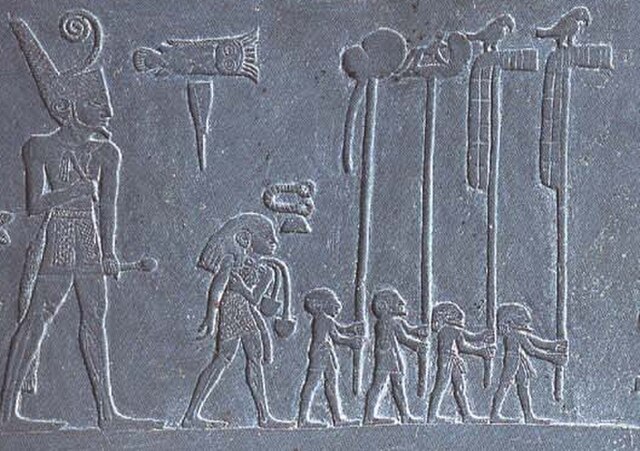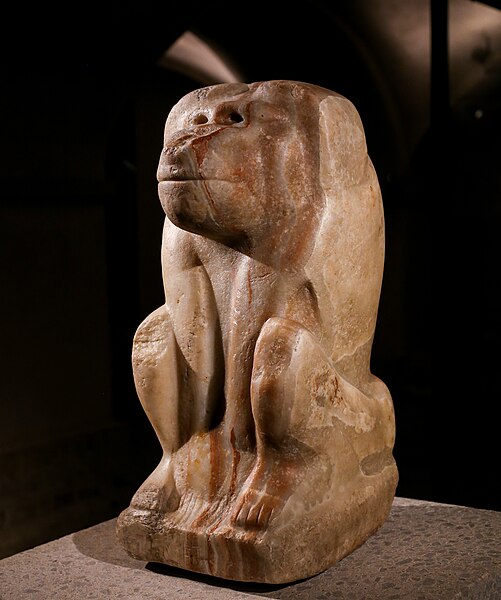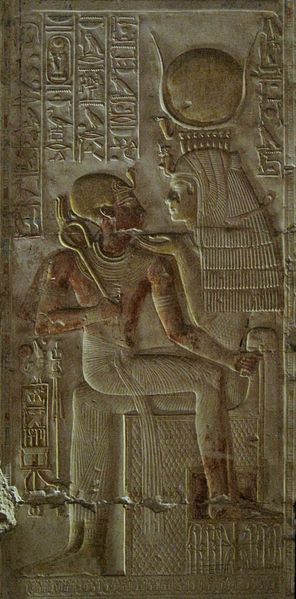Khepri is a scarab-faced god in ancient Egyptian religion who represents the rising or morning sun. By extension, he can also represent creation and the renewal of life.
A pectoral with three scarab beetles attached to a necklace. The jewelry was discovered in the tomb of Tutankhamun. The scarabs, which represent Khepri, are each pushing a sun.
Painting of Khepri in QV66, the entrance to the tomb of Nefertari.
A depiction of Khepri with the upper body of a winged scarab and the lower body of a male human.
Nun, god of the waters of chaos, lifts the barque of the sun god Ra, who is represented by both the scarab and the sun disk, into the sky at the beginning of time.
Ancient Egyptian deities are the gods and goddesses worshipped in ancient Egypt. The beliefs and rituals surrounding these gods formed the core of ancient Egyptian religion, which emerged sometime in prehistory. Deities represented natural forces and phenomena, and the Egyptians supported and appeased them through offerings and rituals so that these forces would continue to function according to maat, or divine order. After the founding of the Egyptian state around 3100 BC, the authority to perform these tasks was controlled by the pharaoh, who claimed to be the gods' representative and managed the temples where the rituals were carried out.
The gods Osiris, Anubis, and Horus in the Tomb of Horemheb (KV57) in the Valley of the Kings
Narmer, a Predynastic ruler, accompanied by men carrying the standards of various local gods
Statue of the baboon god Hedj-Wer, inscribed with the name of king Narmer
Isis, a mother goddess and a patroness of kingship, holds Pharaoh Seti I in her lap.








